12 pictures that sum up Boris Johnson's tumultuous first year as prime minister

It’s been a year since Boris Johnson became prime minister. And it’s safe to say no one expected the country to be in the situation it’s now in when he took over from Theresa May on 24 July, 2019.
He entered office promising to “get Brexit done” and, even though he succeeded with his goal, for many that won’t be how people remember his first 12 months in office.
As the coronavirus swept across the world Johnson’s government has had to manage one of the most tumultuous times in living memory.
Here’s a look back at how a dramatic 12 months has played out:
Watch video below
23 July: Johnson wins the Tory leadership election - and becomes PM
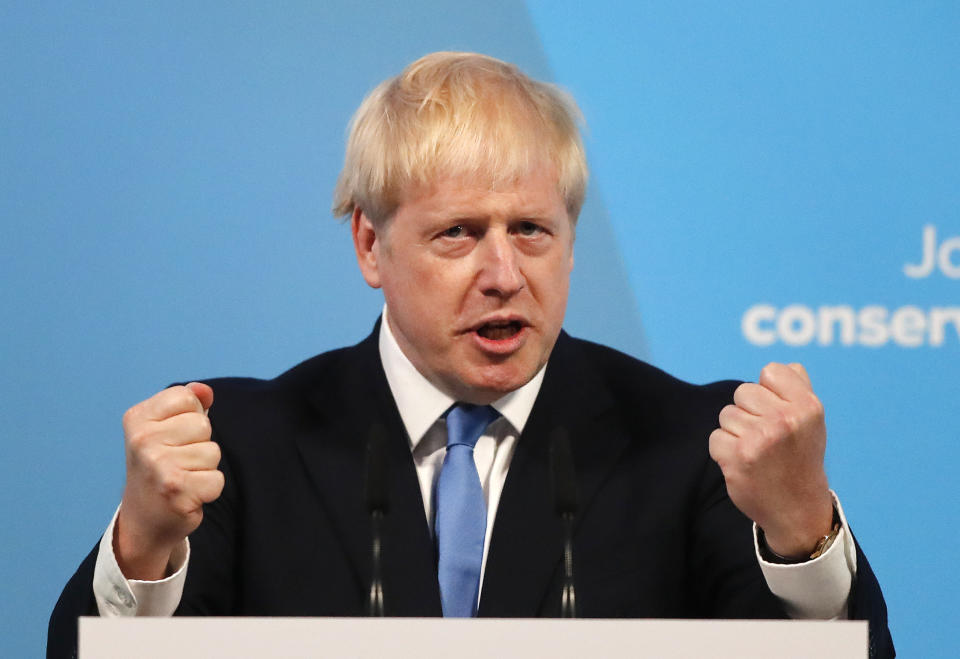
Johnson wins the Conservative Party leadership election, which was triggered after Theresa May failed to get a Brexit deal through the House of Commons and was forced to resign. He saw off his main opponent, Jeremy Hunt, by taking a hardline approach on Brexit which was popular with Conservative Party members and he became the third Tory Prime Minister in four years the following day.
24 September: The failed proroguing of Parliament

Shortly after becoming PM, Johnson had to grapple with a House of Commons that had repeatedly shown it was unwilling to approve a Brexit deal they regarded as flawed. To get around the problem he attempted to suspend parliament for five weeks under the pretence he wanted to prepare for his government’s first Queen’s Speech.
While it is common for Parliament to be closed prior to a government laying out its legislative agenda, the timing and duration of the suspension sounded alarm bells. He was accused of attempting to force through Brexit on October 31 without parliamentary consent. His government was taken to court and on September 24, 2019 the decision to suspend Parliament for five weeks was ruled unlawful.
17 October: Clinching a Brexit deal (for a few days)

After the failure to prorogue parliament, Johnson pressed ahead with his plans for Brexit. He aimed to renegotiate May’s deal in an attempt to please some of the hardline sceptics in his party who wouldn’t support the so-called ‘backstop’ arrangement for Northern Ireland.
A deal was reached on October 17, 2019, and hailed as a success by the government and his party, but the Democratic Unionist Party of Northern Ireland (which had hitherto propped up the Tory minority government) refused to support it. Without the support of the DUP the government’s failed to get the deal through Parliament on 22 October, leading Johnson to demand a general election to beat the deadlock.
12 December: Johnson’s crushing election victory
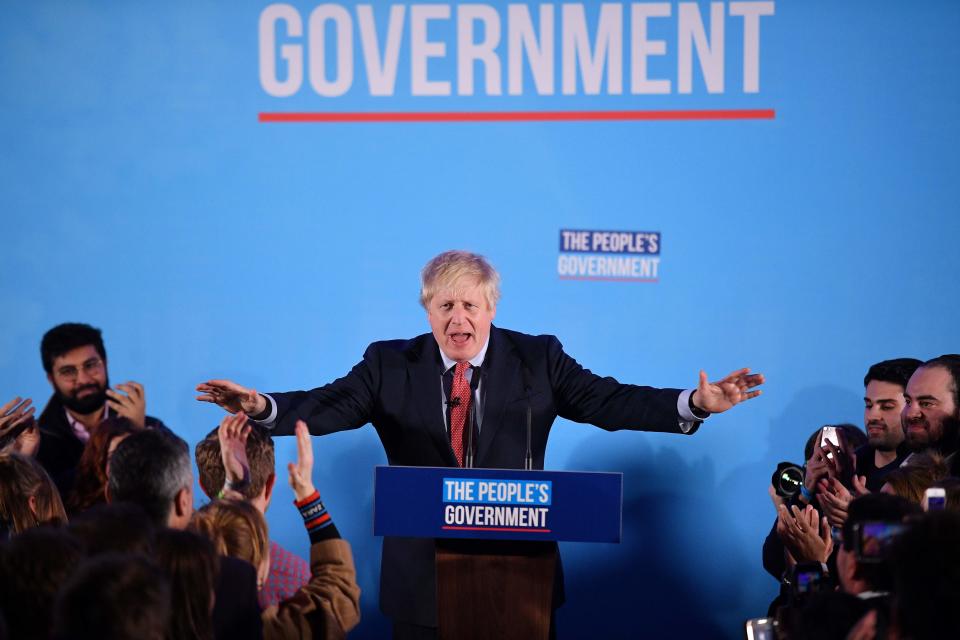
The election was a risky move for Johnson. While his party was ahead in the polls, they had been in power for nine years and May had tried a similar move in 2017 which had ended in disaster.
Ultimately though Johnson’s gamble paid off, with the Conservatives gaining 66 seats and securing its biggest majority since Margaret Thatcher’s 1987 victory.
The December 12 election was dominated by the collapse of Labour’s ‘red wall’ in the north of England. Many seats that had been solidly Labour for decades switched to Conservative as lifelong voters were dissatisfied with Jeremy Corbyn leadership and his party’s stance on Brexit.
31 January: Brexit happens
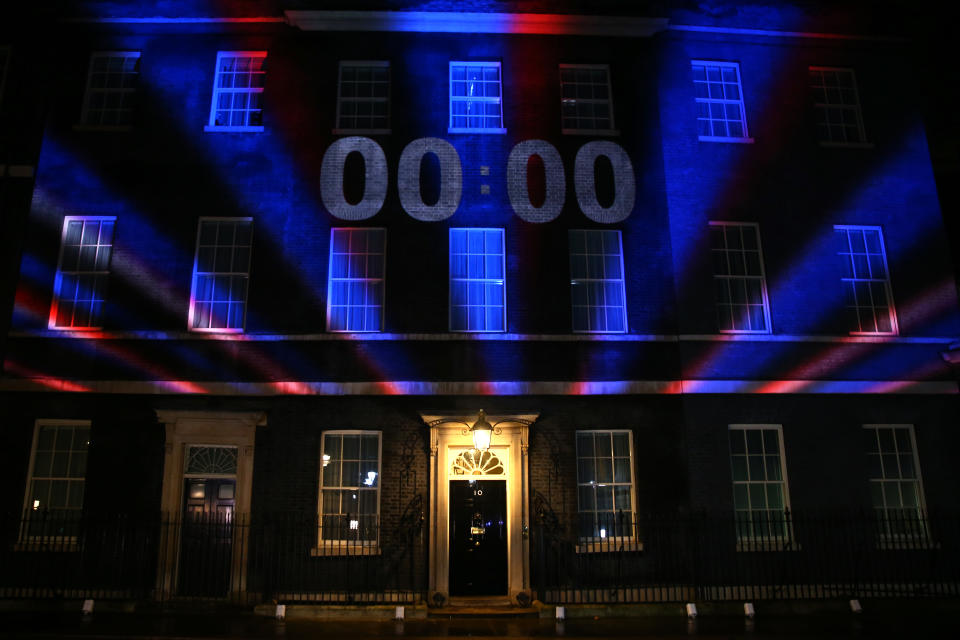
With a large majority behind him, Johnson was able to pass his Brexit deal through parliament without much fanfare. After years of political wrangling, the country left the European Union on January 31, 2020. In a speech to the nation, Johnson promised a “dawn of a new era” - though the new era he promised was a very different one to anything anyone might have expected.
29 February: Getting engaged - and becoming a father again

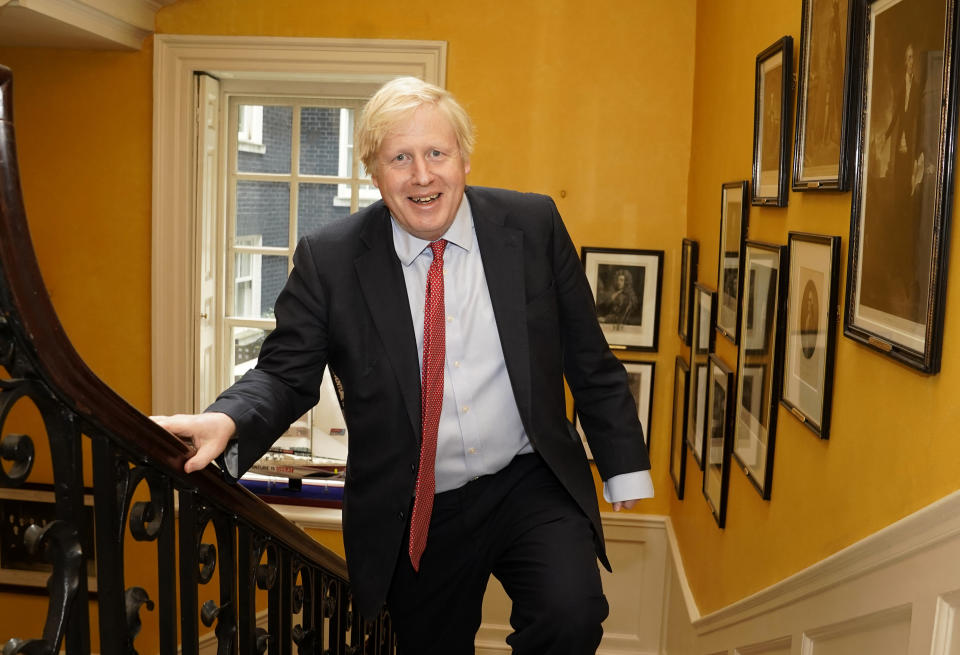
Soon after guiding the country out of the European Union Johnson’s administration was mired in crisis as his Home Secretary Priti Patel faced allegations of bullying and his Chancellor Sajid Javid suddenly resigned.
But it wasn’t all bad news for Johnson on a personal level and, on February 29, his partner Carrie Symonds announced the pair were engaged and that they were expecting their first child. The baby was eventually born on April 29, and named Wilfred Lawrie Nicholas Johnson. The name Nicholas was chosen as a tribute to Dr Nick Price and Dr Nick Hart, the two doctors who helped Johnson recover from his own personal battle with COVID-19.
Early March: The pandemic arrives
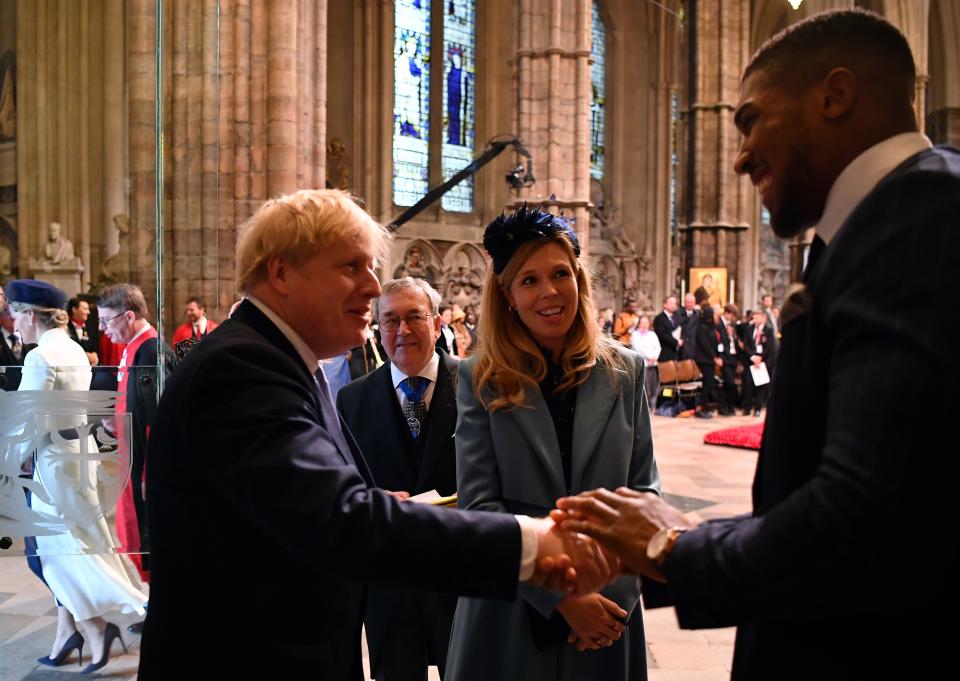
On 30 January, the World Health Organization declared the novel coronavirus outbreak a Public Health Emergency of International Concern. At that time there were 98 cases and no deaths in 18 countries outside China. Throughout February and March, the threat of COVID-19 grew ever closer to the UK’s shores and, on 7 March, the first COVID-19 related death was recorded in the UK.
Europe began to enter lockdown in early March but Johnson was adamant the UK didn’t need to follow suit. His lack of outward concern was criticised, particularly when he told a press conference at the start of March: “I was at a hospital the other night where I think there were a few coronavirus patients and I shook hands with everybody.”
Johnson was also pictured shaking hands with Anthony Joshua on March 9 at the Commonwealth Day service. At the time the government’s scientific advisors were encouraging people to wash their hands regularly and avoid touching others.
23 March: The country goes into lockdown
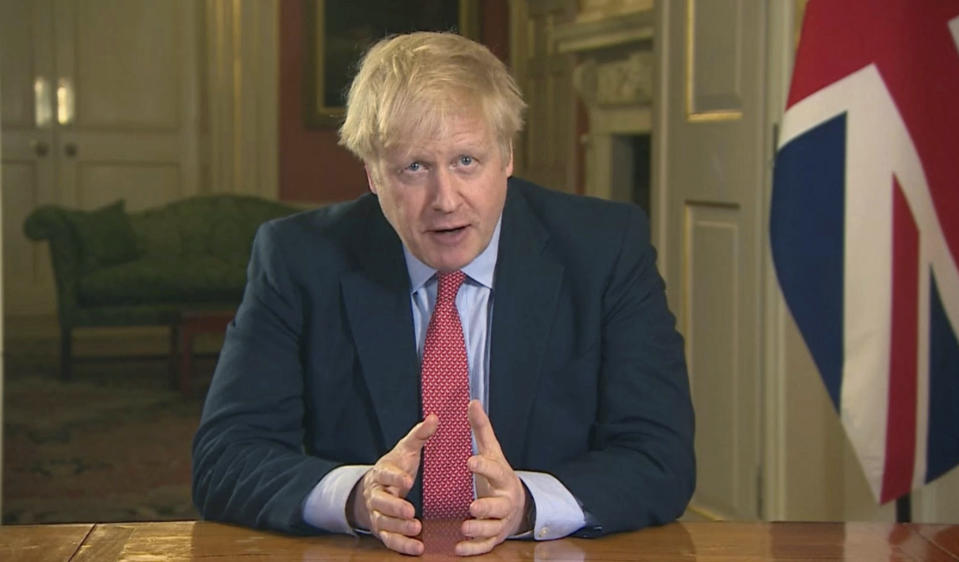
As the crisis intensified, Johnson’s message to the nation suddenly changed. On 12 March, he announced in a grim speech: “It is going to spread further and I must level with you, I must level with the British public: many more families are going to lose loved ones before their time.”
Eleven days later, on March 23, Johnson put the country into lockdown, stating: “The coronavirus is the biggest threat this country has faced for decades – and this country is not alone.”
27 March: Johnson gets coronavirus

Four days after putting the country into lockdown it was confirmed Johnson had contracted COVID-19. He went into isolation within Downing Street and continued to work remotely but on April 5 he was admitted to hospital because he was suffering from ‘persistent symptoms’.
The next day he was moved to intensive care for two days and wouldn’t be discharged until April 12. In his first address to the nation after leaving hospital, he said: “The NHS has saved my life, no question.”
25 May: The country watches Cummings
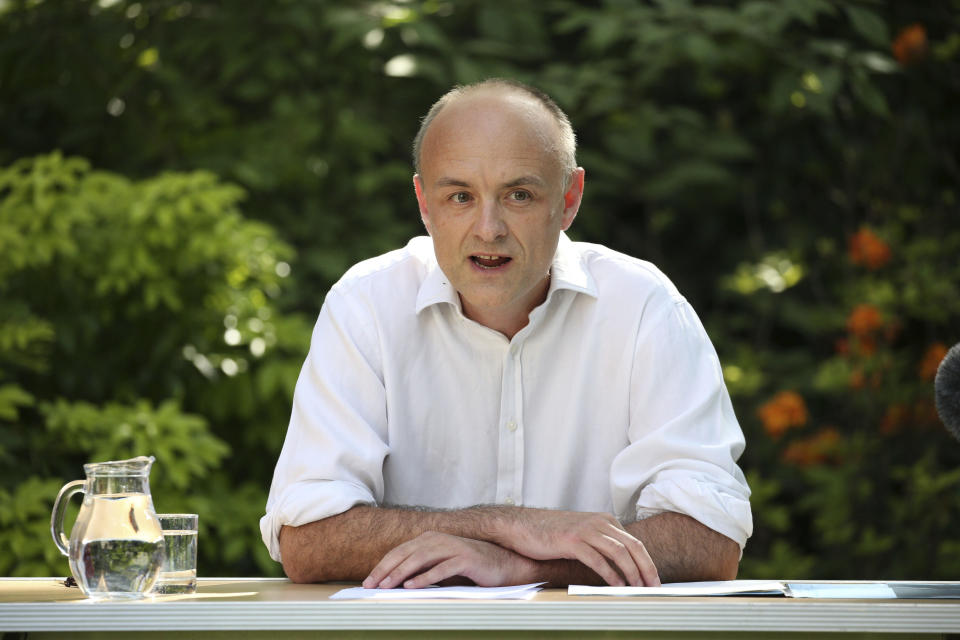
At the end of May Boris Johnson’s chief advisor, Dominic Cummings, created a frenzy after it emerged he had taken his family to Durham during the height of the lockdown in a breach of the government’s own rules.
The backlash placed enormous pressure on Johnson to sack him. However, the prime minister backed Cummings, insisting he “acted responsibly, legally and with integrity”. In a remarkable, televised press conference, Cummings tried to explain his actions and managed to hang on to his job.
He remains an integral part of the No 10 machine, but is a hugely divisive figure.
12 July: Johnson wears a face mask
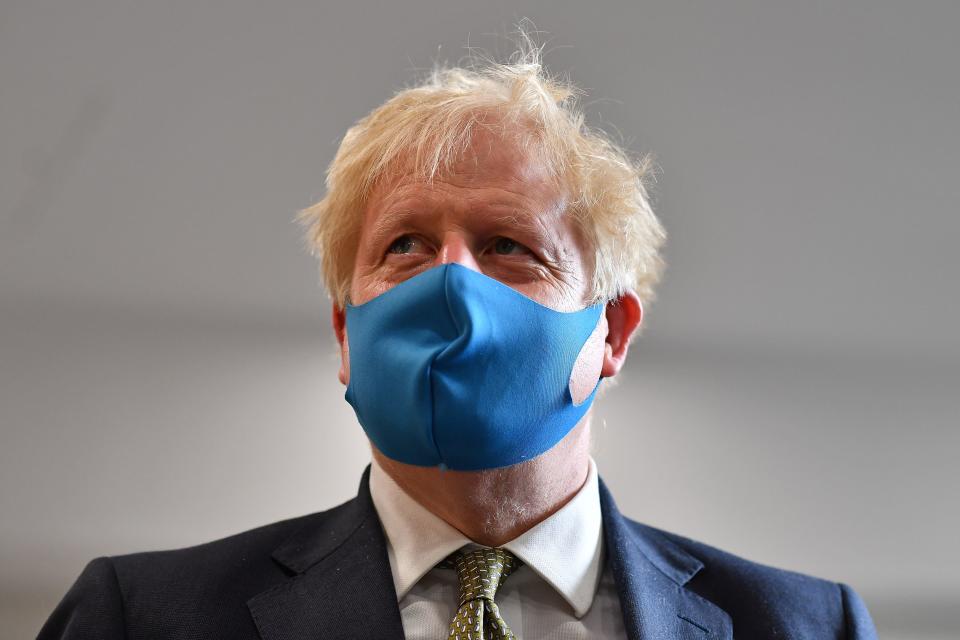
Johnson finally relented to pressure wore a face mask in public for the first. time in the middle of July. Today, exactly one year into his premiership, Johnson’s own government has brought in rules making it compulsory for people in England to wear face coverings in a wide number of public spaces.
With the government borrowing huge sums of money to keep the economy on life support and facing record-breaking slumps in output, it is likely Johnson’s next 12 months will be as challenging as the last.
Coronavirus: what happened today
Click here to sign up to the latest news and information with our daily Catch-up newsletter

